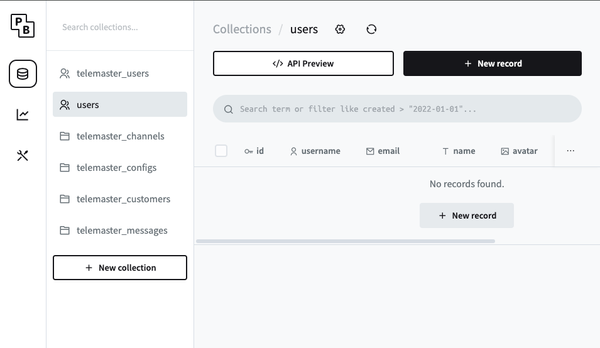WordPress Under Siege: Decoding the Appeal for Cybercriminals. Should You Use WordPress in Your Next Website? No, here is Why!
Table of Content
WordPress, one of the most popular content management systems (CMS) in the world, has a rich history dating back to 2003. Its roots can be traced to b2/cafelog, an open-source blogging platform developed by Michel Valdrighi between 2001 and 2003. This precursor laid the foundation for what would become WordPress.
In 2003, Matt Mullenweg and Mike Little forked b2/cafelog to create WordPress. The first version, WordPress 0.7, was released on May 27, 2003, marking the beginning of a revolutionary platform. The following year saw a significant development with the introduction of the plugin architecture in WordPress 1.2, which allowed for easy extensibility of the platform.
WordPress continued to evolve rapidly. In 2005, version 2.0 was released, introducing a new admin interface and the ability to create static pages, expanding its capabilities beyond just blogging. The WordPress ecosystem grew further in 2008 with the launch of the WordPress Theme Directory, providing a centralized repository for free themes.
A major milestone came in 2010 with the release of WordPress 3.0. This version introduced custom post types and multisite functionality, significantly expanding its capabilities as a comprehensive CMS. These features allowed WordPress to be used for a wider range of websites, from simple blogs to complex corporate sites.
The platform's evolution continued with the introduction of a new JavaScript and API-powered interface for WordPress.com, the hosted version of WordPress, in 2015. This was followed by another significant change in 2018 with the release of WordPress 5.0, which introduced the Gutenberg block editor.
This new editor revolutionized the content creation experience, offering more flexibility and ease of use.
Throughout its history, WordPress has maintained its commitment to open-source principles, fostering a large and active community of developers, designers, and users. This collaborative ecosystem has been key to its continued growth and success.
By 2021, WordPress had become the dominant force in web publishing, powering over 40% of all websites on the internet and solidifying its position as the world's most popular CMS.
The success of WordPress can be attributed to its user-friendly interface, extensive customization options, and the continuous efforts of its community to improve and adapt the platform. As it continues to evolve, WordPress remains at the forefront of web publishing technology, shaping the way content is created and shared on the internet.
The Success of WordPress, made it a popular Target for Hackers
WordPress powers over 40% of all websites on the internet, making it a prime target for cybercriminals. Its widespread use comes with significant security challenges that website owners must navigate.
This blog post delves into common security concerns related to WordPress, the reasons hackers target it, the tools they use, and whether it remains a wise choice for businesses with minimal update requirements.
The popularity of WordPress has led to an ongoing battle between security experts and hackers. Recent news highlights the persistent threats:
- In July 2024, a critical vulnerability was discovered in a popular WordPress plugin, affecting over 3 million websites. The flaw allowed attackers to take control of affected sites. (Source: Wordfence Blog)
- A report from August 2024 revealed a sophisticated hacking campaign targeting WordPress sites to inject malicious scripts for cryptojacking. (Source: BleepingComputer)
- In September 2024, security researchers uncovered a large-scale attack exploiting a zero-day vulnerability in a widely-used WordPress theme framework. (Source: The Hacker News)
These recent incidents underscore the importance of understanding WordPress security concerns and implementing robust protection measures.
As we explore the reasons hackers target WordPress, the common attack vectors, and the tools they use, it becomes clear that website owners must remain vigilant and proactive in their security efforts.
Why Hackers Target WordPress
- Popularity: With millions of installations, WordPress presents an irresistible target for hackers. The platform's vast user base amplifies the potential impact of successful attacks. WordPress security experts note that this widespread adoption leads to a significantly higher frequency of attacks compared to less popular platforms (Sucuri).
- Open-Source Nature: WordPress's open-source code is publicly accessible. This transparency fosters community collaboration and enhancements but also enables hackers to scrutinize the code for potential vulnerabilities (WPScan).
- Vulnerabilities in Plugins and Themes: WordPress sites often rely on plugins and themes to enhance functionality and aesthetics. However, these can introduce security risks, particularly when not regularly updated. Hackers frequently exploit outdated or poorly coded plugins to gain unauthorized access (Wordfence).
- Bad Configuration: Improper setup of WordPress sites, such as weak permissions or default settings, can create security loopholes that hackers can exploit.
- Outdated Versions: Websites running outdated versions of WordPress core software are particularly vulnerable, as these versions may contain known security flaws that have been patched in newer releases.
- Outdated Themes and Plugins: Similar to outdated core versions, using outdated themes and plugins can expose a site to vulnerabilities that have been fixed in more recent updates.
Common Attack Vectors
1- Brute Force Attacks:
Hackers employ sophisticated automated tools to systematically guess login credentials, often using extensive dictionaries of common passwords and usernames. This relentless assault on WordPress sites can be effectively mitigated through the implementation of strong, unique passwords for all user accounts, coupled with strict limitations on login attempts.
Additionally, employing two-factor authentication adds an extra layer of security, making it significantly more challenging for attackers to gain unauthorized access (WPBeginner).
2- SQL Injection:
In this insidious attack vector, malicious actors attempt to inject harmful SQL queries into forms or URLs, aiming to manipulate or compromise the underlying database. These attacks can lead to unauthorized data access, data theft, or even complete database corruption.
To safeguard against SQL injection, it's crucial to implement proper sanitation and validation of all user input data. This includes using prepared statements, parameterized queries, and escaping special characters. Regular security audits and the use of Web Application Firewalls (WAF) can provide additional protection against these types of attacks (OWASP).
3- Cross-Site Scripting (XSS):
XSS attacks occur when malicious actors inject harmful scripts into web pages that are subsequently viewed by unsuspecting users. These scripts can steal sensitive information, manipulate page content, or redirect users to malicious sites. The risk of XSS can be significantly reduced by ensuring thorough validation and sanitization of all user input before it's rendered on the page.
This includes implementing Content Security Policies (CSP), using HTML encoding for dynamic content, and leveraging security headers. Regular penetration testing can help identify potential XSS vulnerabilities before they can be exploited by attackers (Mozilla Developer Network).
Tools Hackers Use
Hackers employ a diverse arsenal of sophisticated tools to identify and exploit vulnerabilities in WordPress installations. These tools range from specialized scanners to comprehensive security testing platforms:
- WPScan: This popular open-source security scanner is specifically designed for WordPress. It systematically probes WordPress sites, identifying potential security weaknesses in themes, plugins, and core installations. WPScan's extensive database of known vulnerabilities makes it a powerful tool for both ethical hackers and malicious actors.
- Metasploit: A highly versatile penetration testing framework, Metasploit offers a wide array of modules and exploits that can be leveraged against WordPress sites. Its flexibility allows hackers to craft complex attack scenarios, exploiting multiple vulnerabilities in tandem to gain unauthorized access or escalate privileges within a WordPress environment.
- Burp Suite: This comprehensive web application security testing platform provides a robust set of tools for analyzing and exploiting WordPress vulnerabilities. Its features include an advanced proxy for intercepting and modifying traffic, a scanner for automated vulnerability detection, and various modules for manual testing and exploitation (Kali Linux). Burp Suite's ability to customize and chain attacks makes it a formidable tool in a hacker's arsenal.
- SQLMap: While not exclusive to WordPress, SQLMap is frequently used to test for and exploit SQL injection vulnerabilities in WordPress databases. Its automated approach to detecting and exploiting database flaws can quickly compromise poorly secured WordPress installations.
- OWASP ZAP (Zed Attack Proxy): This open-source web application security scanner is often employed to identify a wide range of vulnerabilities in WordPress sites. Its ability to perform automated scans as well as assist in manual penetration testing makes it a versatile tool for uncovering security weaknesses.

Post-Hack Usage
Once hackers gain unauthorized access to a WordPress site, they often exploit it for various malicious purposes. With millions of WordPress sites potentially affected by these attacks, the impact can be far-reaching and devastating. Here are some common ways hackers misuse compromised WordPress sites:
1- Botnets:
Compromised WordPress sites can be incorporated into vast networks of infected computers, known as botnets. These botnets, which can consist of thousands or even millions of hijacked websites, are then used to launch large-scale Distributed Denial of Service (DDoS) attacks or distribute spam emails on a massive scale.
For example, the Cisco Talos Intelligence Group has reported instances where over 20,000 WordPress sites were simultaneously compromised and used in botnet attacks (Cisco Talos). These attacks can overwhelm target servers, causing service disruptions and financial losses for businesses worldwide.
2- Malware Distribution:
Hackers frequently exploit compromised WordPress sites to distribute various types of malware. This can include viruses, trojans, ransomware, and other malicious software. By injecting harmful code into legitimate WordPress sites, attackers can create a wide network for malware distribution, potentially infecting millions of unsuspecting visitors.
The malware may be designed to steal sensitive information, such as credit card details or login credentials, or it might be used to further propagate the infection to other systems. In some cases, hackers have been known to use WordPress sites to host command and control (C&C) servers for their malware operations, making it harder for security researchers to track and shut down these malicious activities.
3- Phishing:
Compromised WordPress sites are often leveraged to create sophisticated phishing campaigns. Attackers may modify existing pages or create new ones that mimic login pages for popular services like online banking, social media platforms, or email providers. These deceptive pages are designed to trick users into entering their credentials, which are then harvested by the attackers.
According to Google's Safe Browsing statistics, millions of users encounter phishing sites each year, with a significant portion of these malicious pages hosted on compromised WordPress sites (Google).
The familiarity and trust associated with established WordPress sites make these phishing attempts particularly dangerous, as users are more likely to fall for the scam when it appears on a website they recognize.
The Attacks on WordPress installs are Increasing!
The scale of these attacks is staggering, with security firms estimating that millions of WordPress sites are potentially vulnerable or already compromised.
For instance, a 2023 report by Wordfence, a leading WordPress security firm, revealed that they blocked over 4 billion malicious requests targeting WordPress sites in just one month. This highlights the ongoing and pervasive nature of the threat landscape surrounding WordPress installations.
Is WordPress Still a Wise Choice? (NO)
For companies with minimal technical resources and infrequent update needs, WordPress is not recommended as a viable option. The platform's security risks outweigh its benefits in such scenarios.
Alternative solutions to consider:
- Static Site Generators: Platforms like Hugo or Jekyll offer better security with less maintenance.
- Managed CMS Solutions: Services like Wix or Squarespace provide security and updates without technical overhead.
- Headless CMS: Options like Contentful or Strapi offer flexibility and improved security for companies with some technical capabilities.
These alternatives can provide a more secure and low-maintenance solution for companies lacking the resources to properly manage a WordPress site. While WordPress has its strengths, the potential security risks make it unsuitable for organizations unable to commit to regular updates and maintenance.




Wrapping up!
In the end, while WordPress remains a popular choice for website development, its widespread use also makes it a prime target for cybercriminals. The platform's security vulnerabilities, particularly when not properly maintained, pose significant risks to businesses and individuals alike.
As we've explored, hackers employ sophisticated tools and techniques to exploit these weaknesses, potentially leading to devastating consequences such as data breaches, malware distribution, and reputational damage.
However, it's important to note that WordPress can still be a viable option for those willing to invest time and resources into robust security measures. Regular updates, proper configuration, and vigilant monitoring are essential for maintaining a secure WordPress site. For organizations lacking the technical expertise or resources to manage these security demands, alternative platforms or managed solutions may be more suitable.
Ultimately, the decision to use WordPress should be based on a careful assessment of an organization's specific needs, resources, and risk tolerance. By staying informed about the latest security threats and best practices, website owners can make educated decisions to protect their digital assets and ensure a safer online presence for themselves and their users.












